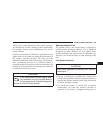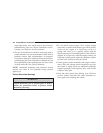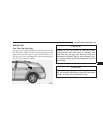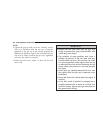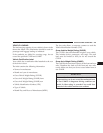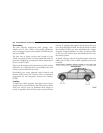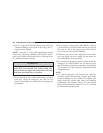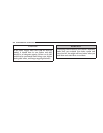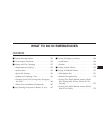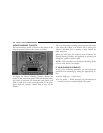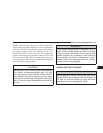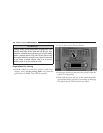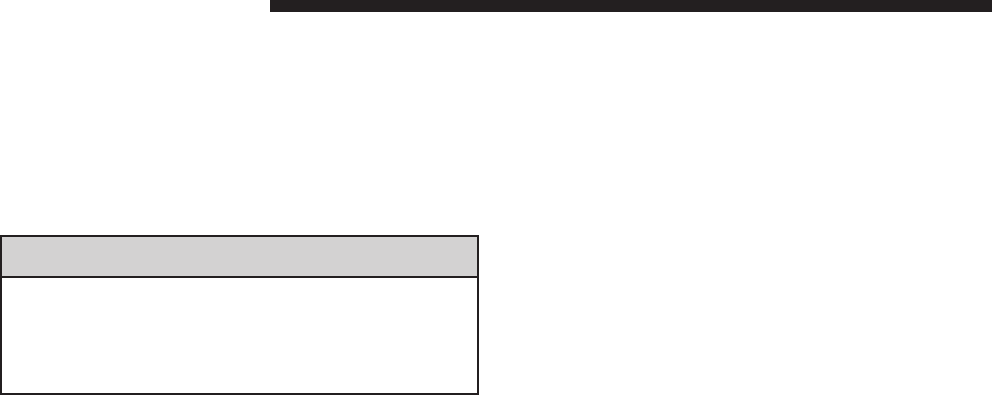
•
The “D” range can be selected when towing. However,
if frequent shifting occurs while in this range, the “3”
range must be selected.
NOTE:
Using the “3” range while operating the vehicle
under heavy operating conditions will improve perfor-
mance and extend transmission life by reducing exces-
sive shifting and heat build up.
WARNING!
Connecting trailer brakes to your vehicle’s hydraulic
brake lines can overload your brake system and
cause it to fail. You might not have brakes when you
need them and could have an accident.
•
Do not attempt to tow a trailer while using a compact
spare tire, except for emergency use only. Do not
exceed 50 mph (80km/h), and repair the damaged tire
immediately.
•
When towing a trailer greater than 2000 lbs. (907 kg)
you should carry a full-size wheel and tire as a spare in
the event of a flat. If the compact spare tire is used it
may adversely affect vehicle handling.
•
Whenever you pull a trailer, regardless of the trailer
size, stop lights and turn signals on the trailer are
recommended for motoring safety.
•
The automatic transmission fluid and filter should be
changed if you REGULARLY tow a trailer for more
than 45 minutes of continuous operation. See Schedule
“B” in section 8 of this manual for transmission fluid
change intervals.
NOTE:
•
For vehicles equipped with Autostick. By using the
Autostick modes, and selecting a specific gear range,
frequent shifting can be avoided. The highest gear
range should be selected that allows for adequate
performance. For example, choose “4” if the desired
speed can be maintained. Choose “3” or “2” if needed
to maintain the desired speed.
252 STARTING AND OPERATING




